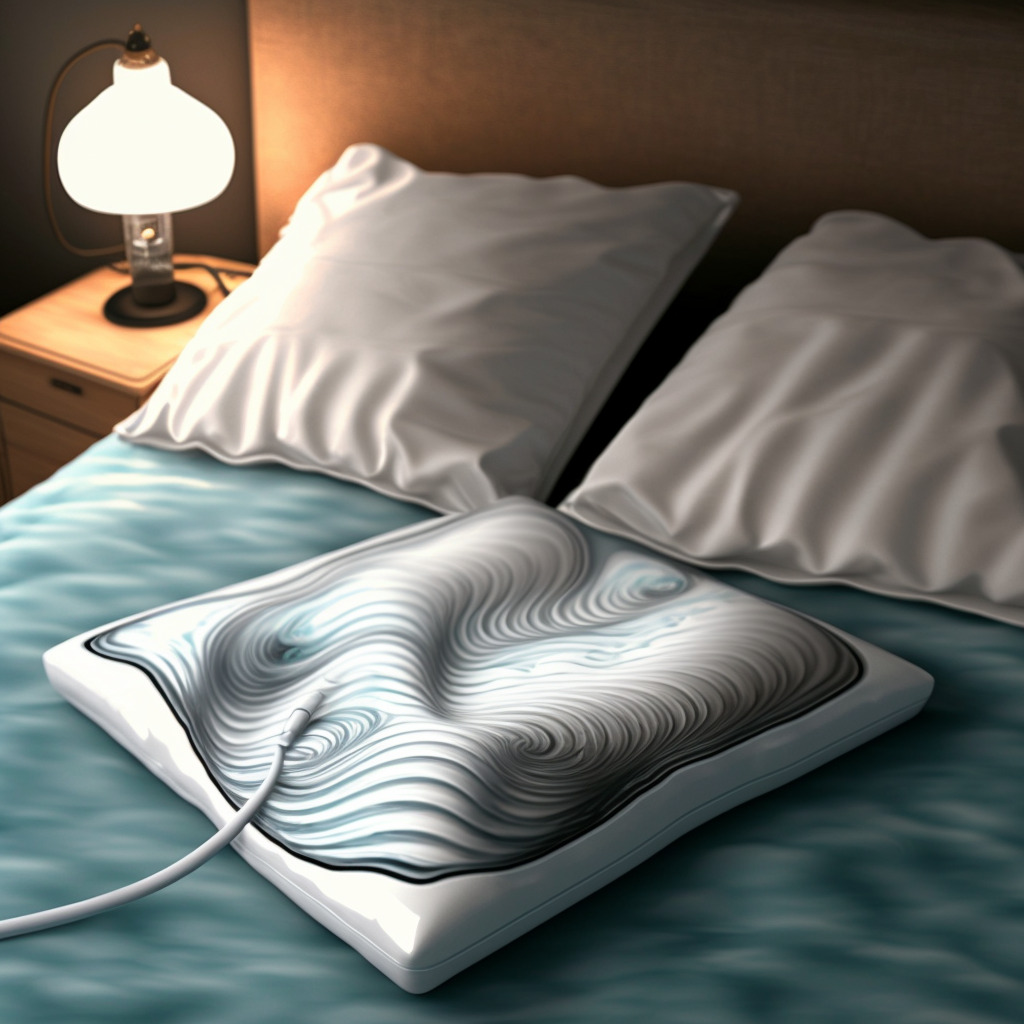Is PEMF Safe? What Are the Side Effects?

PEMF therapy is a relatively new form of alternative medicine that has been gaining popularity in recent years. It is a non-invasive therapy that uses low-frequency electromagnetic waves to stimulate and heal the body.
PEMF therapy is being used for a variety of conditions, including pain relief, improved circulation, and reduced inflammation.
However, there are concerns regarding the safety of PEMF therapy.
Who Should NOT use PEMF Therapy?
While PEMF therapy is generally safe, some people should not use it. These include (1):
- Tuberculosis
- Pregnancy
- Malignancy
- Cardiac pacemaker or any implanted electrical device
- Atrophic skin or scar tissue
- Bleeding disorders
- Edema
- Ischemia
Unfortunately, if you have a pacemaker fitted, you should not use PEMF therapy because the therapy systems may override and switch off the battery-operated pacemaker, making it unsafe.
Although there is no concrete evidence to suggest that PEMF therapy is harmful to pregnant women, there have not been enough studies or research to establish its safety. Therefore, experts do not recommend the use of PEMF therapy during pregnancy.
Is PEMF Safe During Pregnancy
As mentioned above, there is limited research on the safety of PEMF therapy during pregnancy. Pregnant women should avoid it. The effects of PEMF therapy on fetal development are not well understood. It is always best to consult a healthcare provider before using PEMF therapy during pregnancy.
Side Effects of PEMF Therapy
Oxidative Stress
Numerous research studies have indicated that EMF exposure can lead to oxidative stress in various tissues within the body (2). Researchers have observed that exposure to EMF increases the production of free radicals within the cellular environment.
Living organisms possess anti-oxidative mechanisms, such as glutathione (GSH), glutathione peroxidase (GPx), catalase (CAT), and superoxide dismutase (SOD), to mitigate the damage caused by reactive oxygen species (ROS) and their byproducts (3). These defense mechanisms work by suppressing or impeding the chain reaction triggered by ROS.
However, when subjected to agents that cause overproduction of ROS, such as EMF, the antioxidant defense mechanisms become impaired, resulting in oxidative stress (4) (5).
Decreased Blood Pressure
PEMF therapy may cause a decrease in blood pressure and a reduction in heart rate, which can be dangerous for elderly patients or those with cardiovascular issues. Patients who have been bedridden for extended periods may also be at risk. Dizziness and fainting are common symptoms.
Temporary Increase in Pain
Pain alleviation through PEMF therapy has certain side effects. Some patients may experience temporary pain increases due to improved circulation or traffic to nerve cells. It is best to start at the lowest possible intensity.
Nutritional deficiencies can also occur, since the therapy stimulates body cells to utilize more nutrients. Consult a nutritionist.
Fall in Blood Sugar Levels
PEMF therapy can significantly reduce blood sugar levels. This is a critical factor for patients who struggle to regulate their blood sugar. Moreover, PEMF therapy can promote blood clotting, making it unsuitable for those who take anticoagulant medications like aspirin.
Related Articles:
Others
Competent authorities and expert groups have established numerous safety exposure guidelines and provided expert opinions stating that exposure to electromagnetic fields can potentially have adverse effects on various bodily systems, including the brain, peripheral nervous system, cardiovascular system, and cognitive and vestibular function (6).
Additionally, previous studies have linked exposure to electromagnetic fields with depression, suicide, and neurodegenerative diseases in utility workers. Recent studies have further shown that long-term exposure to man-made electromagnetic fields can cause DNA damage, increasing the risk of seizures, syncope, neurodegenerative diseases, reproductive decline, and more (6).
It is crucial to pay close attention to the potential adverse effects of long-term PEMFs in future studies to ensure safety and security.
How Serious Are Adverse Reactions to PEMF Therapy?
PEMF therapy is a non-invasive form of alternative medicine that uses low-frequency electromagnetic waves to stimulate and heal the body. It is safe when used correctly, but like any form of therapy, it does carry some risks.
Some people may experience adverse reactions to PEMF machines and PEMF therapy, although these reactions are generally mild and do not last long.
Adverse reactions to PEMF therapy can be classified into two categories: immediate reactions and delayed reactions.
Immediate reactions occur during or immediately after a PEMF therapy session. They may include skin irritation from the electrodes used in PEMF therapy, headaches, dizziness, and nausea.
Delayed reactions occur several hours or even days after a PEMF therapy session. They may include fatigue, irritability, and insomnia. These reactions are generally mild and do not last long. If you experience any of these, it is important to let your healthcare provider know.
While adverse reactions to PEMF therapy are generally mild, there have been some reports of more serious adverse reactions. These include seizures and changes in heart rate and blood pressure. These more serious adverse reactions are rare but can occur in some people.
If you experience any of these more serious adverse reactions, seek medical attention immediately.
It is important to note that the risks of adverse reactions to PEMF therapy are generally low. Most people who receive PEMF therapy do not experience any adverse reactions at all. However, it is important to be aware of the risks and to take steps to minimize them.
- Choose a reputable healthcare provider who is qualified to use PEMF machines. Your healthcare provider should be able to answer any questions you have about the therapy and should be able to monitor you for any adverse reactions.
- Follow the instructions provided by your healthcare provider. Make sure to follow the recommended duration and intensity of the therapy session. Do not exceed the recommended dose of PEMF therapy, as this can increase the risk of adverse reactions.
- Let your healthcare provider know if you have a pacemaker or other electronic device before starting PEMF therapy. PEMF therapy can interfere with pacemakers and other electronic devices, and your healthcare provider may need to adjust your therapy accordingly.
While adverse reactions to PEMF therapy are possible, they are generally mild and do not last long. With proper use and monitoring, PEMF therapy can be a safe and effective form of alternative medicine.
References:
- Külcü, Duygu Geler, et al. “Short-Term Efficacy of Pulsed Electromagnetic Field Therapy on Pain and Functional Level in Knee Osteoarthritis: A Randomized Controlled Study.” Archives of Rheumatology, Turkish League Against Rheumatism, 1 Jan. 1970, https://archivesofrheumatology.org/full-text/311#:~:text=contraindications%20for%20PEMF%20and%20US,%2C%20edema%20and%20ischemia%2C%203.
- Kıvrak, Elfide Gizem, et al. “Effects of Electromagnetic Fields Exposure on the Antioxidant Defense System.” Journal of Microscopy and Ultrastructure, U.S. National Library of Medicine, 2017, https://www.ncbi.nlm.nih.gov/pmc/articles/PMC6025786/#:~:text=Several%20studies%20have%20reported%20that,affect%20the%20radical%20couple%20recombination.
- Calcabrini C;Mancini U;De Bellis R;Diaz AR;Martinelli M;Cucchiarini L;Sestili P;Stocchi V;Potenza L; “Effect of Extremely Low-Frequency Electromagnetic Fields on Antioxidant Activity in the Human Keratinocyte Cell Line NCTC 2544.” Biotechnology and Applied Biochemistry, U.S. National Library of Medicine, https://pubmed.ncbi.nlm.nih.gov/27001710/.
- I;, Venugopal SK;Devaraj S;Yang T;Jialal. “Alpha-Tocopherol Decreases Superoxide Anion Release in Human Monocytes under Hyperglycemic Conditions via Inhibition of Protein Kinase C-Alpha.” Diabetes, U.S. National Library of Medicine, https://pubmed.ncbi.nlm.nih.gov/12351446/.
- B;, Halliwell. “Oxidative Stress and Cancer: Have We Moved Forward?” The Biochemical Journal, U.S. National Library of Medicine, https://pubmed.ncbi.nlm.nih.gov/17150040/.
- Author links open overlay panelHongzhi Hu a c 1, et al. “Promising Application of Pulsed Electromagnetic Fields (Pemfs) in Musculoskeletal Disorders.” Biomedicine & Pharmacotherapy, Elsevier Masson, 23 Sept. 2020, https://www.sciencedirect.com/science/article/pii/S0753332220309604#bib0825.


